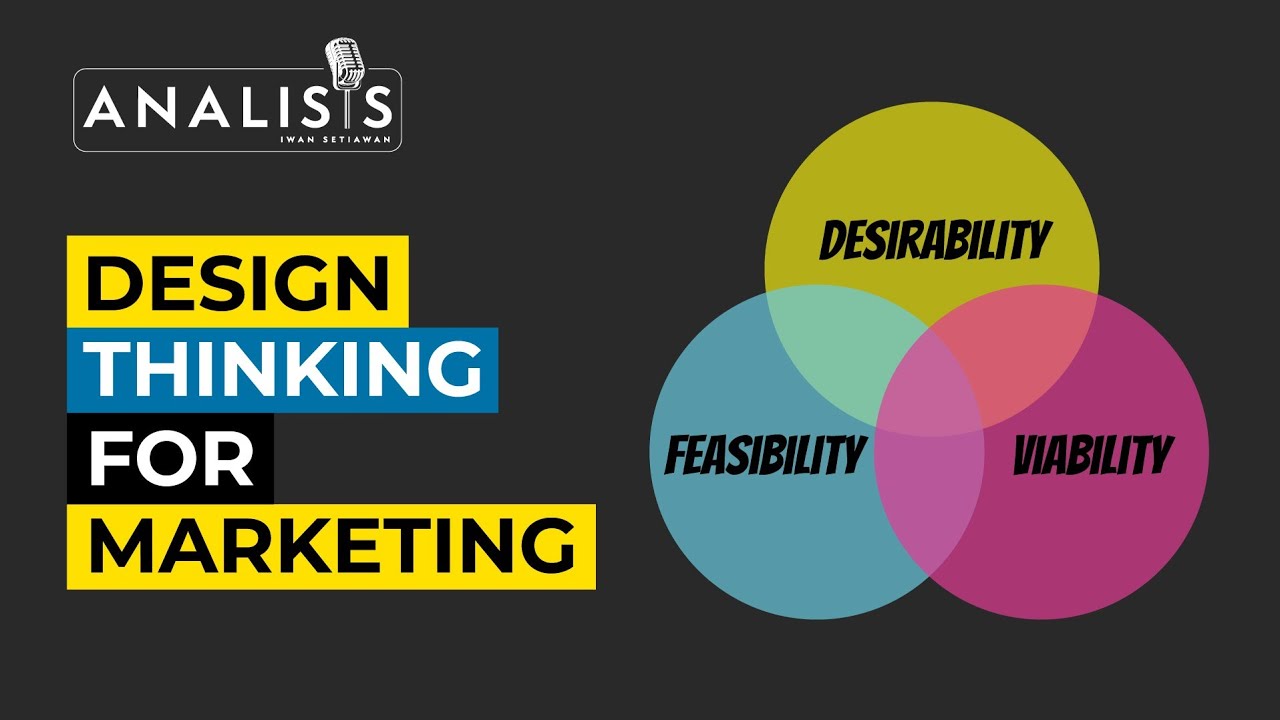MOE - Creative Idea and Innovation
Summary
TLDRThis script explores the intersection of creativity, innovation, and business, emphasizing the importance of solving customer needs through creative solutions. It introduces entrepreneurship as the bridge between identifying opportunities and creating value. The concept of innovation is demystified, focusing on problem-solving rather than just technological advancement. Design thinking is presented as a tool to understand and address customer pain points through a five-step process: defining the target customer, empathizing with their needs, ideating solutions, prototyping, and testing. The script concludes by discussing the multifaceted nature of value in products and services, from functional benefits to social impact, urging businesses to align their offerings with customer expectations.
Takeaways
- 😀 Creativity and innovation are foundational for business, combining to create new solutions that meet customer needs.
- 🔍 The essence of creativity in business is to create value for customers, which they are willing to accept and engage with.
- 🚀 Entrepreneurship is about identifying opportunities to create value and acting on them to capitalize on those opportunities.
- 🤔 Innovation in business doesn't always mean high-tech solutions; it's about creating new ways to solve everyday problems.
- 🧐 Understanding customer problems is crucial for innovation; it starts with identifying who your customers are and what their specific needs are.
- 📊 Design thinking is a valuable tool for problem-solving in business, consisting of five main steps: empathize, define, ideate, prototype, and test.
- 🎯 The first step in design thinking is to define the target customer and create a persona to represent their pain points.
- 🤝 Empathy is key in design thinking; it involves understanding customers through interviews, observations, surveys, and research.
- 💡 Ideation is the process of brainstorming potential solutions to customer problems, considering various factors like resources and feasibility.
- 🛠 Prototyping allows for the development of a mock-up of the idea to test its effectiveness with customers and gather feedback.
- 🍣 The example of the sushi conveyor belt illustrates how innovation can address specific problems, such as reducing the need for waitstaff and improving efficiency.
- 🏆 Value in products and services can be multi-layered, ranging from functional benefits to emotional, life-changing, and social impact.
- 📈 Understanding the types of value customers seek is essential for creating products and services that meet their expectations and needs.
Q & A
What is the definition of 'create' according to Merriam-Webster dictionary?
-According to Merriam-Webster dictionary, 'create' means to make or bring into existence something new.
How does creativity relate to solving customers' needs in a business context?
-In a business context, creativity is used to devise solutions that address customers' needs, offering them value and meeting their requirements.
What is the role of entrepreneurship in the context of creativity and innovation?
-Entrepreneurship involves identifying opportunities to create value and acting on them. It is crucial for combining creativity with business to offer customers innovative solutions.
What is the difference between creativity and innovation in the business context discussed in the script?
-Creativity in business involves creating solutions for customers' needs, while innovation is about finding new ways to solve everyday problems, not necessarily involving high-tech solutions.
How can understanding the customer's pain points help in business innovation?
-Understanding the customer's pain points allows businesses to innovate by focusing on creating solutions that directly address these issues, enhancing customer satisfaction and value.
What is the purpose of the design thinking chart mentioned in the script?
-The design thinking chart is a tool used to identify and solve customer problems by guiding entrepreneurs through a structured process of ideation and prototyping.
What are the five main steps of the design thinking process as outlined by the Stanford design school?
-The five main steps of the design thinking process are: 1) defining the target customer, 2) empathizing with the customer to find pain points, 3) ideating potential solutions, 4) prototyping the best ideas, and 5) testing the prototypes with customers.
Why is it important for a business to understand the specific problems of a targeted customer group?
-Understanding specific customer problems allows businesses to create targeted and effective solutions, which can lead to better customer satisfaction and business success.
How does the concept of 'pain point' relate to customer needs in the context of the script?
-A 'pain point' refers to the most significant problems or issues faced by customers. Identifying these pain points is crucial for businesses to create solutions that meet customer needs and provide value.
What is the significance of prototyping in the design thinking process?
-Prototyping is significant as it allows businesses to test their ideas in a tangible form, gather feedback, and make necessary adjustments before finalizing the product or service.
How does the script illustrate the concept of value in products and services?
-The script illustrates the concept of value by explaining how products and services can offer functional benefits, emotional satisfaction, life-changing impacts, and social benefits, which are all types of value that customers seek.
Outlines

This section is available to paid users only. Please upgrade to access this part.
Upgrade NowMindmap

This section is available to paid users only. Please upgrade to access this part.
Upgrade NowKeywords

This section is available to paid users only. Please upgrade to access this part.
Upgrade NowHighlights

This section is available to paid users only. Please upgrade to access this part.
Upgrade NowTranscripts

This section is available to paid users only. Please upgrade to access this part.
Upgrade NowBrowse More Related Video

Pendahuluan Kreativitas dan Inovasi

Creativity, Innovation and Critical Thinking - An Animated Introduction

Video Presentasi Proses Bisnis Berbagai Industri di Bidang DKV

TUGAS DDKV "BAB 4 , TEKNIK DASAR PROSES PRODUKSI PADA INDUSTRI DESAIN KOMUNIKASI VISUAL"

Belajar Design Thinking dan Penerapan di Marketing - ANALISIS #49

KATALIS SOFTSKILL : Kreatif dan Inovatif
5.0 / 5 (0 votes)